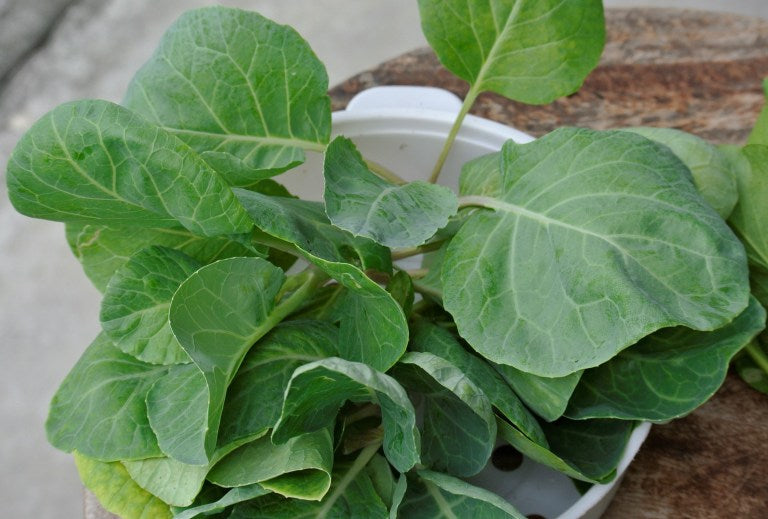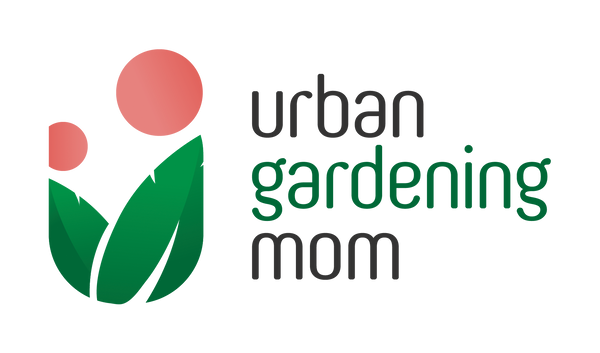
Growing Chinese Broccoli (Kai-lan) in Warm Climate Zones
Share
Also known as Chinese kale or Chinese broccoli, Kai-Lan (Gai-Lan) is a favorite in Chinese restaurants. Like its western counterpart – the broccoli, this leafy vegetable is rich in vitamins and minerals. Chinese broccoli is best served when stir-fried with lots of garlic mixed in oyster sauce.
In the Philippines, Chinese broccoli ( or Chinese kale) is typically grown in the cooler regions, where the temperature does not exceed 30 degrees Celsius throughout the year. Fortunately, it is still generally more heat tolerant than other Chinese greens so it is still possible to grow this vegetable even in warm cities like Manila. From my experience, I find the home-grown kai-lan leaves delightfully more flavorful than the commercial ones.
Growing Kai-lan in Manila
 A few months ago, I experimented on a few seeds which I had sprinkled over a potting mixture (“Step-by-step Guide on How to Sow your First Seeds “). In about 5 days, the seeds already started to germinate. I was quite surprised that it germinated well despite the summer heat. As soon as the second set of leaves appeared, I decided to transplant them one by one in separate containers.
A few months ago, I experimented on a few seeds which I had sprinkled over a potting mixture (“Step-by-step Guide on How to Sow your First Seeds “). In about 5 days, the seeds already started to germinate. I was quite surprised that it germinated well despite the summer heat. As soon as the second set of leaves appeared, I decided to transplant them one by one in separate containers.
An ideal container size should have a minimum of 6-inches in width, and at least 8- inches in depth. For faster growth and bigger leaves, it is better to plant them in deeper containers in order for them to develop a better root system.
 Extra attention is needed to ensure that the plant does not bolt (produce flower) prematurely when the weather gets extremely hot. Premature bolting limits the growth of leaves, making them smaller when harvested. Bolting occurs when the soil becomes too hot, which creates a lot of stress for most plants. To prevent this, make sure that the soil is always moist. Some experts also suggest that mulching the soil helps lower its temperature during extremely hot days. Alternatively, moving the plants to areas with partial or dappled shade especially during the peak days of summer also helps them cope with the summer heat.
Extra attention is needed to ensure that the plant does not bolt (produce flower) prematurely when the weather gets extremely hot. Premature bolting limits the growth of leaves, making them smaller when harvested. Bolting occurs when the soil becomes too hot, which creates a lot of stress for most plants. To prevent this, make sure that the soil is always moist. Some experts also suggest that mulching the soil helps lower its temperature during extremely hot days. Alternatively, moving the plants to areas with partial or dappled shade especially during the peak days of summer also helps them cope with the summer heat.
Harvesting the Baby Kai-lan (Gai-lan)
In about 2 months, the leaves should have grown by at least 6 inches and can already be harvested as baby kai-lan. During this time, the stalk can still be very tender. I prefer to harvest at this stage, rather than wait for the stalks to fully thicken. When grown organically in containers, the stalks and leaves do not grow as thick and hard as those harvested commercially from the uplands.
Once harvested, the leaves should be consumed in 2- 3 days in order to enjoy them at their best flavor and texture. When harvesting baby kai-lan, cut only the top portion and leave at least one leaf node. After a few days, new leaves will appear and this will be ready again for harvest after another 3 weeks. Make sure to add compost or fertilizer to replenish the soil nutrients.
 Another option is to wait longer for the stalk to become thickened before harvesting. If flower stalks appear, it is best to harvest the leaves (including the flower stalk) right before the flowers bloom. In any case, the flowers and flower stalks are still edible so nothing is wasted.
Another option is to wait longer for the stalk to become thickened before harvesting. If flower stalks appear, it is best to harvest the leaves (including the flower stalk) right before the flowers bloom. In any case, the flowers and flower stalks are still edible so nothing is wasted.
Caring for the Chinese Kale/ Chinese Broccoli
Make sure that the soil gets its regular nutrients through compost or nitrogen-rich organic mixtures. To ensure a continuously productive harvest, fertilize the soil with compost or organic matter every 2- 3 weeks. Observe the leaves if the growth seems to be stunted at a certain point. A healthy plant should have a deep green color. When the color of the leaves turn yellow, this may be a sign that the plant either lacks sunlight or nutrients. At least 4 hours of direct sunlight is enough, but 6 hours is ideal for faster growth.
Visit my other blog articles at http://www.urbangardeningmom.com for more tips on growing Asian vegetables.
